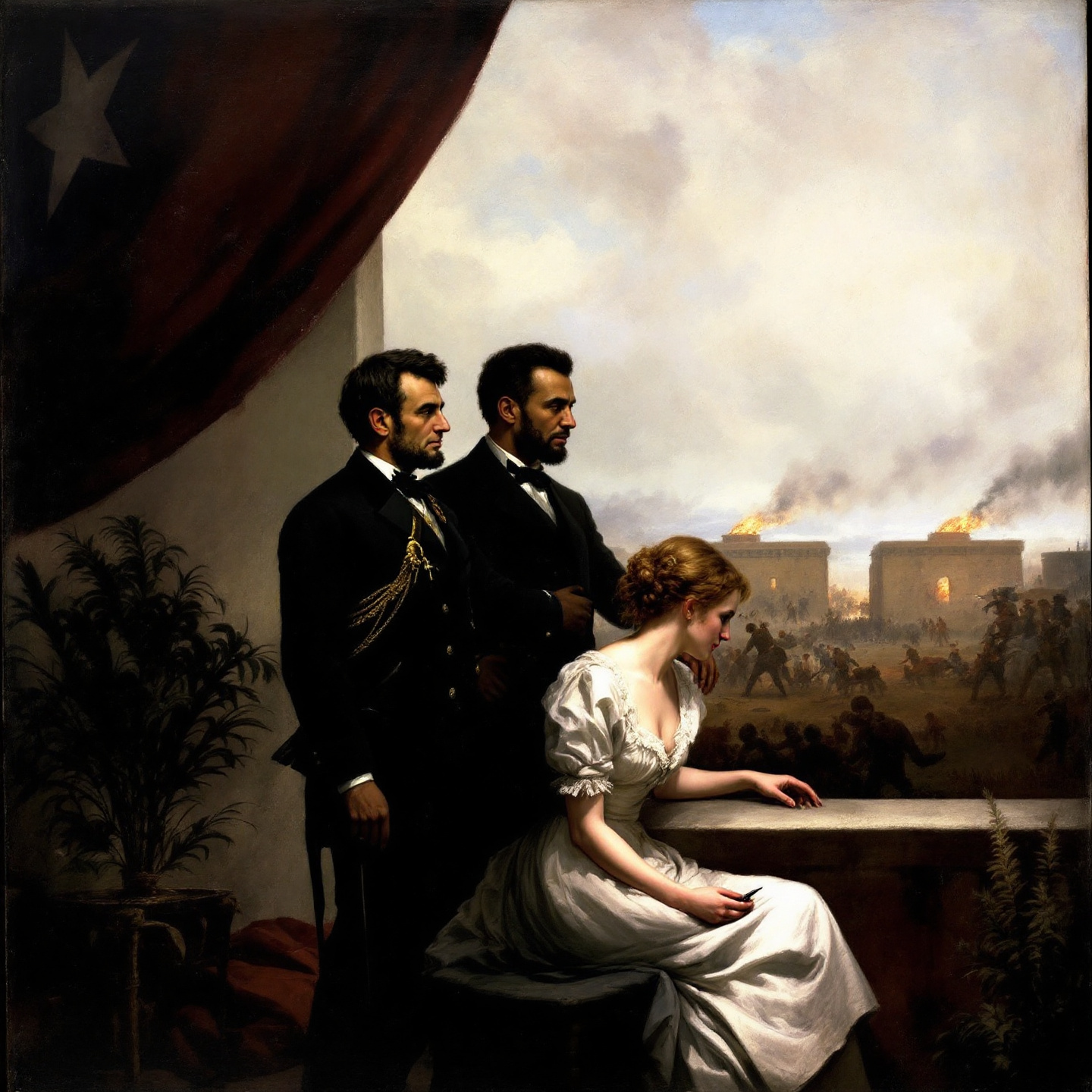Erik Larson, renowned for his captivating narrative nonfiction, has once again enthralled readers with his latest masterpiece, “The Demon of Unrest: A Saga of Hubris, Heartbreak, and Heroism at the Dawn of the Civil War.” This gripping account delves into the tumultuous five-month period between Abraham Lincoln’s election in 1860 and the outbreak of the American Civil War, offering a fresh perspective on one of the most pivotal moments in U.S. history.
A Nation on the Brink
Larson’s narrative skillfully weaves together the stories of key figures caught in the maelstrom of a country teetering on the edge of war. At the heart of this suspense-filled tale is Fort Sumter, a lonely federal fortress in Charleston Harbor that becomes the focal point of escalating tensions between North and South.The author introduces us to a compelling cast of characters, including Major Robert Anderson, the conflicted commander of Fort Sumter; Edmund Ruffin, a fervent secessionist stirring the flames of rebellion; and Mary Boykin Chesnut, a Southern plantation wife whose diary provides invaluable insights into the era. Through their eyes, we witness the unraveling of a nation, as misunderstandings, inflamed passions, and political maneuvering push the country towards an inevitable conflict.
The Art of Historical Storytelling
Larson’s talent for breathing life into historical events shines through in “The Demon of Unrest.” Drawing from an extensive array of primary sources, including diaries, secret communiques, slave ledgers, and plantation records, he constructs a narrative that is both meticulously researched and utterly engrossing. The author’s attention to detail and his ability to create a sense of immediacy transport readers back to this crucial moment in American history.One of the book’s strengths lies in its exploration of the human element behind the grand historical narrative. Larson delves into the personal struggles, ambitions, and fears of his characters, offering a nuanced portrayal of the complex motivations driving both sides of the conflict. This approach allows readers to connect with historical figures on a more intimate level, making the events of the past feel immediate and relevant.
Echoes of the Past in the Present
While “The Demon of Unrest” is firmly rooted in the 19th century, Larson’s narrative draws striking parallels to contemporary issues. The book serves as a stark reminder of the fragility of democracy and the dangers of political polarization. As we witness the characters grappling with questions of loyalty, identity, and the future of their nation, it’s impossible not to reflect on the echoes of these struggles in our own time.
The Author’s Craft
Erik Larson has established himself as a master of his craft, known for his ability to turn historical events into page-turning narratives. His previous works, such as “The Devil in the White City” and “In the Garden of Beasts,” have garnered critical acclaim and a devoted readership. With “The Demon of Unrest,” Larson continues to demonstrate his skill in blending meticulous research with compelling storytelling.The author’s approach to historical nonfiction is characterized by his commitment to primary sources and his eye for the telling detail. Larson has stated that he does all of his own research, driven by the joy of discovery. This dedication to the craft is evident in the richness and authenticity of his narratives.
Fort Sumter: The Spark that Ignited a War
One of the most compelling aspects of “The Demon of Unrest” is its focus on Fort Sumter as the flashpoint for the Civil War. Larson’s narrative brings to life the strategic importance of this seemingly insignificant fortification and the outsized role it played in the lead-up to the conflict.The author’s portrayal of Major Robert Anderson is particularly nuanced. As a Southerner loyal to the Union, Anderson embodies the internal conflicts tearing the nation apart. His struggle to maintain his honor as a U.S. Army officer while sympathizing with the South adds a layer of complexity to the unfolding drama.
The Power of Miscommunication
Throughout the book, Larson highlights the role of miscommunication and misunderstanding in escalating tensions between North and South. He reveals how both sides often operated under false assumptions about the other’s intentions and resolve. This exploration of the “fog of pre-war” serves as a cautionary tale about the dangers of failing to truly understand one’s adversaries.
Critical Reception
“The Demon of Unrest” has been widely praised for its vivid storytelling and insightful analysis. Critics have noted Larson’s ability to inject suspense into a well-known historical narrative, keeping readers on the edge of their seats despite knowing the ultimate outcome.Some reviewers have pointed out that while the book focuses primarily on the actions of elite white men, it does touch on the broader societal issues at play, including the central role of slavery in the conflict. However, the limited representation of Black Americans and abolitionists in the narrative has been noted as a potential shortcoming.
A Mirror to Our Times
“The Demon of Unrest” stands as a testament to Erik Larson’s skill as a historian and storyteller. By zooming in on the crucial months leading up to the Civil War, he offers readers a fresh perspective on a familiar historical moment. The book serves not only as a gripping account of the past but also as a mirror reflecting our own tumultuous times.Larson’s work reminds us of the importance of understanding history in all its complexity. As we grapple with our own political divisions and societal challenges, “The Demon of Unrest” offers valuable lessons about the fragility of national unity and the consequences of failing to bridge ideological divides.For anyone interested in American history, political intrigue, or simply a masterfully told story, “The Demon of Unrest” is an essential read. It stands as both a warning from the past and a guide for navigating the uncertainties of the present.#CivilWarHistory #ErikLarson #FortSumter #HistoricalNonfiction #AbrahamLincoln #AmericanHistory #PoliticalDivision #NarrativeNonfiction #SouthernSecession #PreWarTensions

답글 남기기